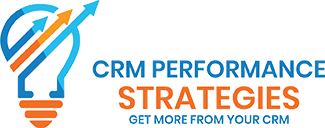
Introduction
Today’s customer relationship management (CRM) systems are more feature-rich, complex and, well… more expensive than ever. CRM systems are among the largest and most complex purchases that small companies make. And yet, even with the cost of an average CRM system reaching $300k over its lifetime, little regard to the financial return on this investment is given. The purpose of this article is to propose actions that can be taken to improve the financial return of your current CRM system.
Business owners with the analytical savvy can implement process improvements and optimization techniques that lead to significant savings. The remaining, and majority, of small business owners and their teams are often unable to manage this complexity. The result is often low CRM adoption, high frustration, and a sense that poor CRM financial returns are unavoidable.
The strategy we recommend in this situation is to reduce CRM expense to meet the savings that can be realized. Our focus will be on improving your existing CRM, with replacement to a less expensive system remaining as another option.

In our example, field salespeople have historically been the “unhappy low adopters” of the CRM user world. This is driven by the highly repetitive nature of their interactions with operating data through CRM. This group also generally accesses data within a limited range of scope. Creating universal data definitions and standards is critical. Significant improvements in both satisfaction and CRM adoption can be attained with customized user interfaces.
Substantial savings can also be realized by using a system that operates without the need for full user seats. Conversely, knowledge workers require a wide scope of unique information and data needs. For example, knowledge workers such as marketing analysts and customer service employees tend to use a wide range of data and analysis to complete their work.
These issues lead us to a simple and cost-effective solution.
Our cost-effective solution is designed to fit most needs and is simple to implement:
- Replace generic CRM user screens with custom user interfaces.
- Define standards for each data element and pair with “drop-down” user entry.
- Replace dedicated user seats with mobile apps for field salespersons.
Implementing custom interfaces can be accomplished with mobile apps. This often includes a data warehouse (often a google sheet) which stores the operating data that field teams need and provides data directly to the mobile app. This simple solution reduces expense today and can provide a dramatic improvement in the return of your CRM. We recommend these steps first, before converting to a less expensive and capable system.
These apps have familiar names (like Google and Microsoft) and utilize the company’s email networks to communicate. Mobile apps are designed to create user specific interfaces that are customized to a position’s needs such as field sales. Interacting directly with data warehouse elements allows you to decide if an expensive CRM is justified.
For example, the savings to replace twenty field sales seats in a full-featured CRM system is approximately $15k per year. The total project cost is often less than the first year’s savings. This results in an internal investment return of over 100% and increased employee satisfaction and CRM adoption.
We offer a free 30 minutes strategy session to find out how much your business can save,
click the link below to schedule:
Schedule a free strategy session
Click this link below to access all of our CRM Performance Strategies tools and models:


